Transcription of TABLE OF CONTENTS - Free Bible Commentary
1 TABLE OF CONTENTSD edication iThe New American Standard Bible Update iiA Word From the Author: How Can This Commentary Help You? iiiGuide to Good Bible Reading: A Personal Search for Verifiable Truth vCommentaryIntroduction to 1 Luke 1 .. 7 Luke 2 .. 32 Luke 3 .. 49 Luke 4 .. 60 Luke 5 .. 76 Luke 6 .. 87 Luke 7 .. 104 Luke 8 .. 113 Luke 9 .. 128 Luke 10 .. 144 Luke 11 .. 156 Luke 12 .. 171 Luke 13 .. 186 Luke 14 .. 194 Luke 15 .. 200 Luke 16 .. 208 Luke 17 .. 220 Luke 18 .. 228 Luke 19 .. 238 Luke 20 .. 248 Luke 21 .. 261 Luke 22 .. 269 Luke 23 .. 286 Luke 24 .. 297 Appendix One:Brief Definitions of Greek Grammatical 307 Appendix Two: Textual Criticism .. 314 Appendix Three: Glossary .. 317 Appendix Four: Doctrinal Statement.
2 324 SPECIAL TOPIC TABLE OF CONTENTSR ighteousness .. 12 Holy .. 19 Son of God .. 20 The Heart .. 23 New Testament 25 27 Covenant .. 29 Glory .. 35 Anointing In the Bible .. 36 Election/Predestination and the Need for a Theological 37 Women in the Bible .. 43 Paul s Use of Women in Ministry .. 45 Gnosticism .. 46 Pontius Pilate .. 50 The Family of Herod the Great .. 51 Repentance .. 53 The Trinity .. 57 Greek Verb Tenses for Testing and Their Connotations .. 63 The Kingdom of God .. 68 Amen .. 69 The Demonic (Unclean Spirit) .. 71 Jesus the 80 Jesus and The Spirit .. 81 Fasting .. 85 The Number 91 Peter, The Man .. 92 Should Christians Judge One Another? .. 98 Human 99 Apostasy (aphist mi) .. 101 Nazarite 109 The Women Who Followed Jesus .. 117 Mystery .. 120 The Need to Persevere .. 121 Does Any Believer Ever Fall Away ( apostasy)?.. 122 This Age and the Age to Come.
3 130 The Sanhedrin .. 134 The Resurrection .. 136 The Name of the Lord .. 140 Degrees of Rewards and Punishment .. 148 Sanctification .. 159 Almsgiving .. 166 Tithing .. 167 Confession .. 175 Wealth .. 177 The Any-Moment Return of Jesus Versus the Not Yet (NT Paradox) .. 182 Jesus Return .. 183 Laying On of Hands in the Bible .. 189 Coins in Use in Palestine in Jesus Day .. 203 The Divisions of the Hebrew Bible .. 214 Where Are the Dead? .. 217 Election .. 230 Destruction .. 241 Luke s Use of 250 Cornerstone .. 255 the sons of God in Genesis 256 Order of Passover Service in First Century Judaism .. 274 Biblical Attitudes Toward Alcohol and 275 Introduction to John 6 .. 277 Reigning in the Kingdom of God .. 278 Father .. 281 Illegalities of the Sanhedrin s Night 284 Burial Spices .. 299 The Kerygma of the Early Church .. 303iIn 1997 Bible Lessons International beganpublishing this Study Guide Commentary was made possible through the generous support of the Henry and Eileen Beyer volume completes the New Testament dedicate it to Eileen Beyer whose heart for missions and the gospel has beensuch a blessing and encouragement to all of usat Bible Lessons 28:18-20 Luke 24:47 Acts 1:8I Corinthians 9:19-23II Corinthians 5:11-21iiThe New American Standard Bible Update 1995 Easier to read} Passages with Old English thee s, thou s, etc.
4 Have been updated to modern English.} words and phrases that could be misunderstood due to changes in their meaning during the past 20 years have been updatedto current English.} Verses with difficult word order or vocabulary have been retranslated into smoother English.} Sentences beginning with And have often been retranslated for better English, in recognition of differences in style betweenthe ancient languages and modern English. The original Greek and Hebrew did not have punctuation as is found in English, andin many cases modern English punctuation serves as a substitute for And in the original. In some other cases, and is translatedby a different word such as then or but as called for by the context, when the word in the original language allows accurate than ever} Recent research on the oldest and best Greek manuscripts of the New Testament has been reviewed, and some passages havebeen updated for even greater fidelity to the original manuscripts.
5 } Parallel passages have been compared and reviewed.} Verbs that have a wide range of meaning have been retranslated in some passages to better account for their use in the still the NASB} The NASB update is not a change-for-the-sake-of-change translation. The original NASB stands the test of time, and changehas been kept to a minimum in recognition of the standard that has been set by the New American Standard Bible .} The NASB update continues the NASB's tradition of literal translation of the original Greek and Hebrew without in the text have been kept within the strict parameters set forth by the Lockman Foundation's Fourfold Aim.} The translators and consultants who have contributed to the NASB update are conservative Bible scholars who have doctoratesin Biblical languages, or theology, or other advanced degrees. They represent a variety of denominational a tradition:The original NASB has earned the reputation of being the most accurate English Bible translation.
6 Other translations in recentyears have sometimes made a claim to both accuracy and ease of reading, but any reader with an eye for detail eventually discoversthat these translations are consistently inconsistent. While sometimes literal, they frequently resort to paraphrase of the original,often gaining little in readability and sacrificing much in terms of fidelity. Paraphrasing is not by nature a bad thing; it can andshould clarify the meaning of a passage as the translators understand and interpret. In the end, however, a paraphrase is as mucha Commentary on the Bible as it is a translation. The NASB update carries on the NASB tradition of being a true Bible translation,revealing what the original manuscripts actually say not merely what the translator believes they mean. The Lockman FoundationiiiA WORD FROM THE AUTHOR: HOW CAN THIS Commentary HELP YOU?Biblical interpretation is a rational and spiritual process that attempts to understand an ancient inspired writer in such away that the message from God may be understood and applied in our spiritual process is crucial but difficult to define.
7 It does involve a yieldedness and openness to God. There mustbe a hunger (1) for Him, (2) to know Him, and (3) to serve Him. This process involves prayer, confession and the willingnessfor lifestyle change. The Spirit is crucial in the interpretive process, but why sincere, godly Christians understand the Bibledifferently, is a rational process is easier to describe. We must be consistent and fair to the text and not be influenced by ourpersonal or denominational biases. We are all historically conditioned. None of us are objective, neutral interpreters. Thiscommentary offers a careful rational process containing three interpretive principles structured to help us overcome PrincipleThe first principle is to note the historical setting in which a biblical book was written and the particular historicaloccasion for its authorship. The original author had a purpose, a message to communicate. The text cannot mean somethingto us that it never meant to the original, ancient, inspired author.
8 His intent not our historical, emotional, cultural, personalor denominational need is the key. Application is an integral partner to interpretation, but proper interpretation must alwaysprecede application. It must be reiterated that every biblical text has one and only one meaning. This meaning is what theoriginal biblical author intended through the Spirit's leadership to communicate to his day. This one meaning may have manypossible applications to different cultures and situations. These applications must be linked to the central truth of the originalauthor. For this reason, this study guide Commentary is designed to provide an introduction to each book of the PrincipleThe second principle is to identify the literary units. Every biblical book is a unified document. Interpreters have noright to isolate one aspect of truth by excluding others. Therefore, we must strive to understand the purpose of the wholebiblical book before we interpret the individual literary units.
9 The individual parts chapters, paragraphs, or verses cannotmean what the whole unit does not mean. Interpretation must move from a deductive approach of the whole to an inductiveapproach to the parts. Therefore, this study guide Commentary is designed to help the student analyze the structure of eachliterary unit by paragraphs. Paragraph and chapter divisions are not inspired, but they do aid us in identifying thought at a paragraph level not sentence, clause, phrase or word level is the key in following the biblicalauthor s intended meaning. Paragraphs are based on a unified topic, often called the theme or topical sentence. Every word,phrase, clause, and sentence in the paragraph relates somehow to this unified theme. They limit it, expand it, explain it,and/or question it. A real key to proper interpretation is to follow the original author's thought on a paragraph-by-paragraphbasis through the individual literary units that make up the biblical book.
10 This study guide Commentary is designed to helpthe student do that by comparing modern English translations. These translations have been selected because they employdifferent translation United Bible Society's Greek text is the revised fourth edition (UBS4). This text was paragraphed by moderntextual New King James Version (NKJV) is a word-for-word literal translation based on the Greek manuscripttradition known as the Textus Receptus. Its paragraph divisions are longer than the other translations. Theselonger units help the student to see the unified New Revised Standard Version (NRSV) is a modified word-for-word translation. It forms a midpoint betweenthe following two modern versions. Its paragraph divisions are quite helpful in identifying Today's English Version (TEV) is a dynamic equivalent translation published by the United Bible Society. Itattempts to translate the Bible in such a way that a modern English reader or speaker can understand the meaningof the Greek text.

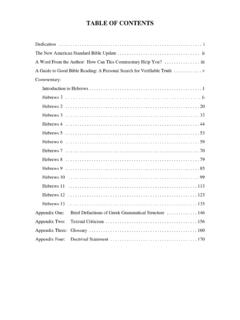
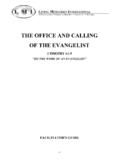
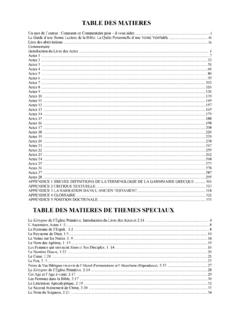
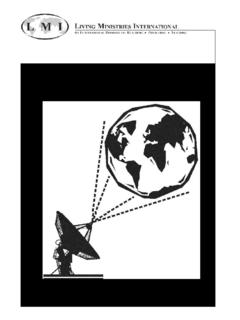
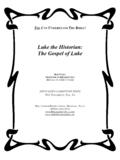
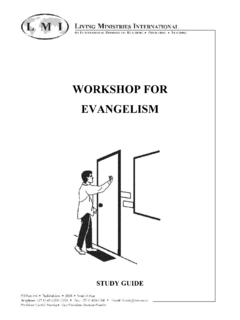

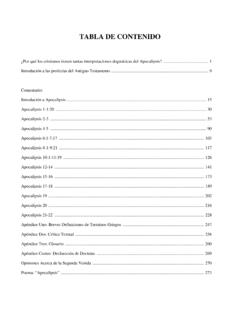

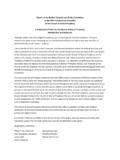
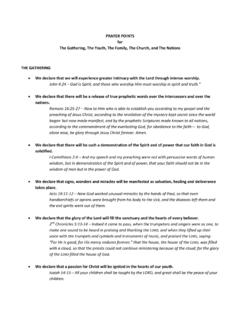
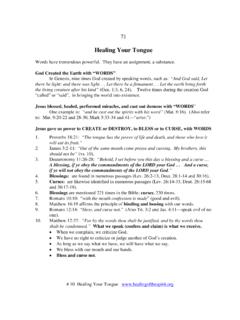

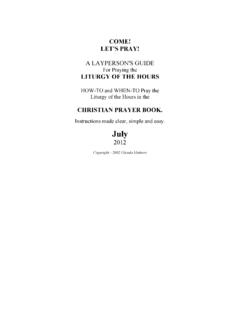
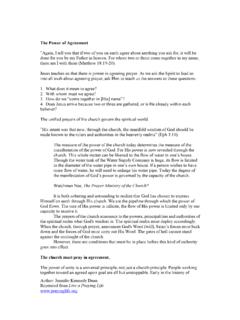

![Theology 3.1 Theology of the Church [Ecclesiology]](/cache/preview/a/f/9/c/b/8/4/1/thumb-af9cb8416ff3f661442ece1bfd5dced1.jpg)